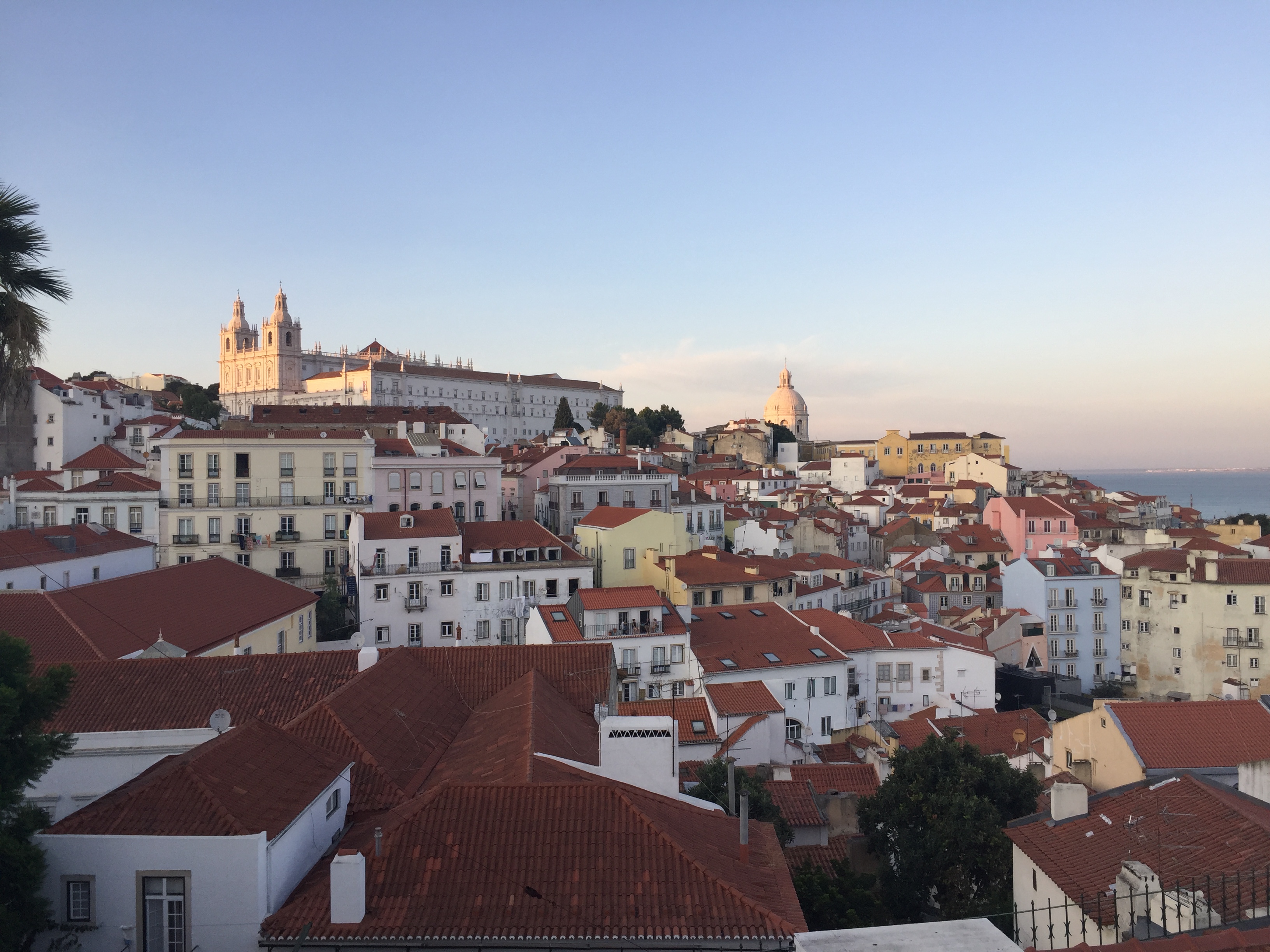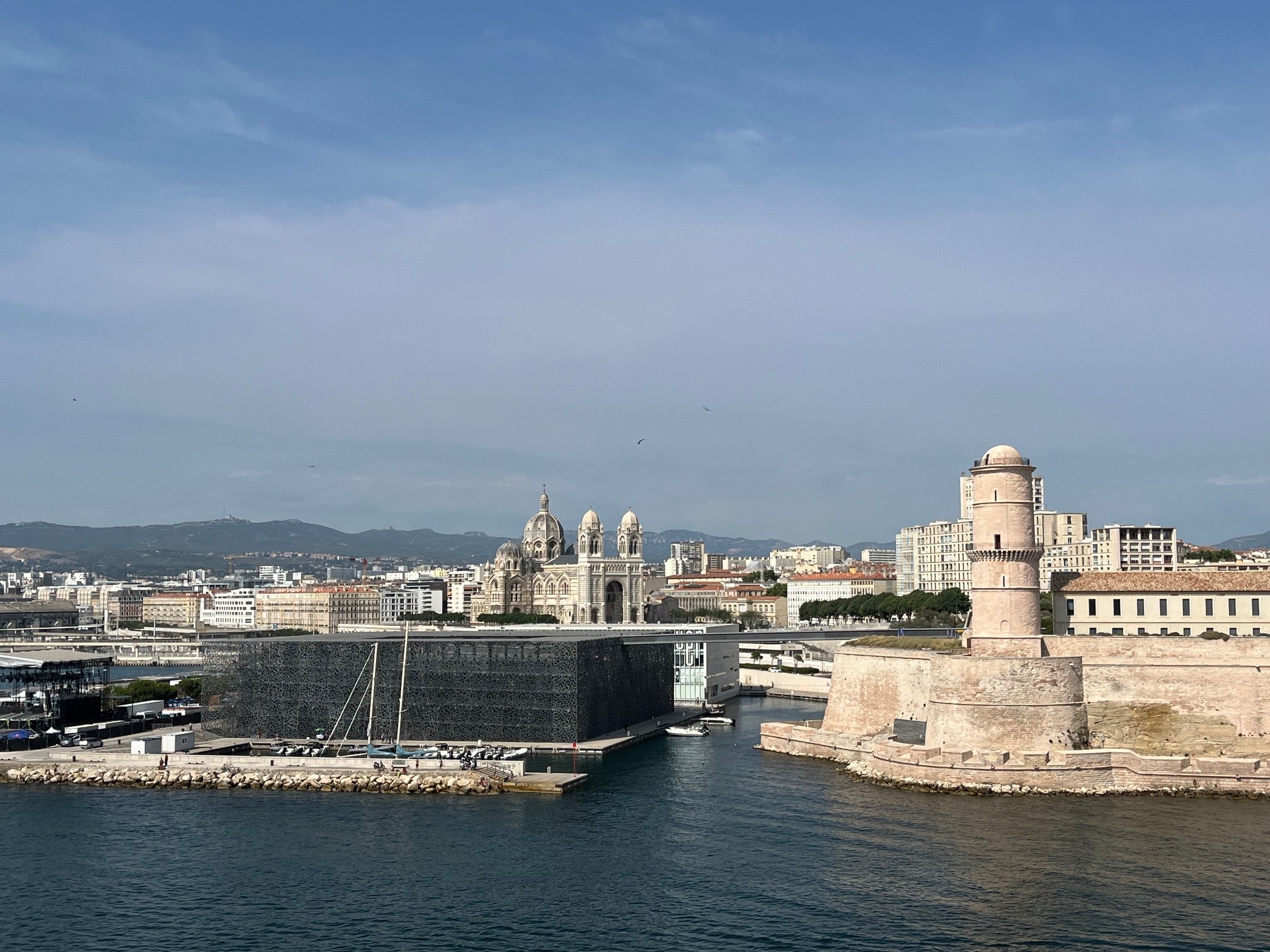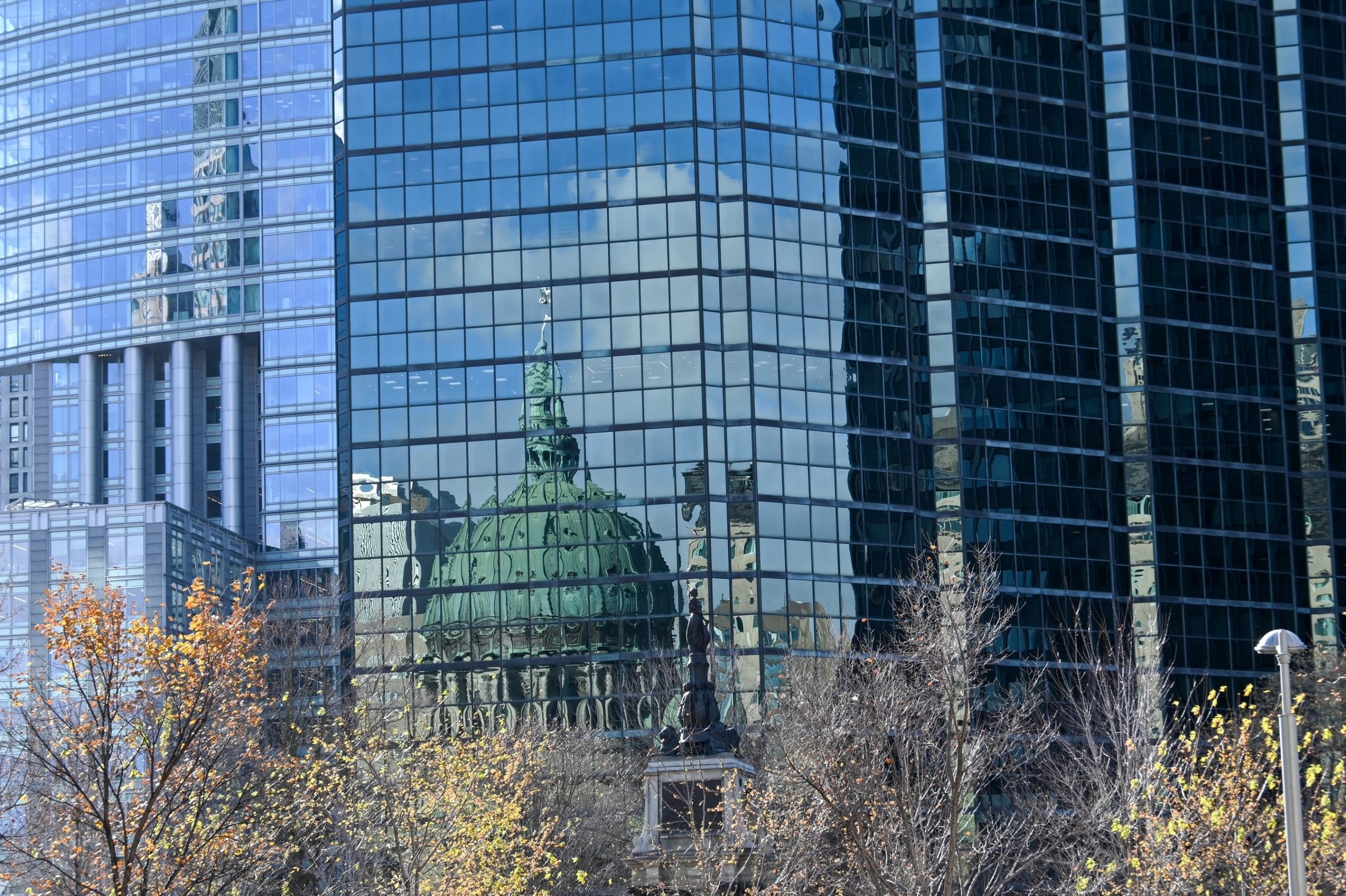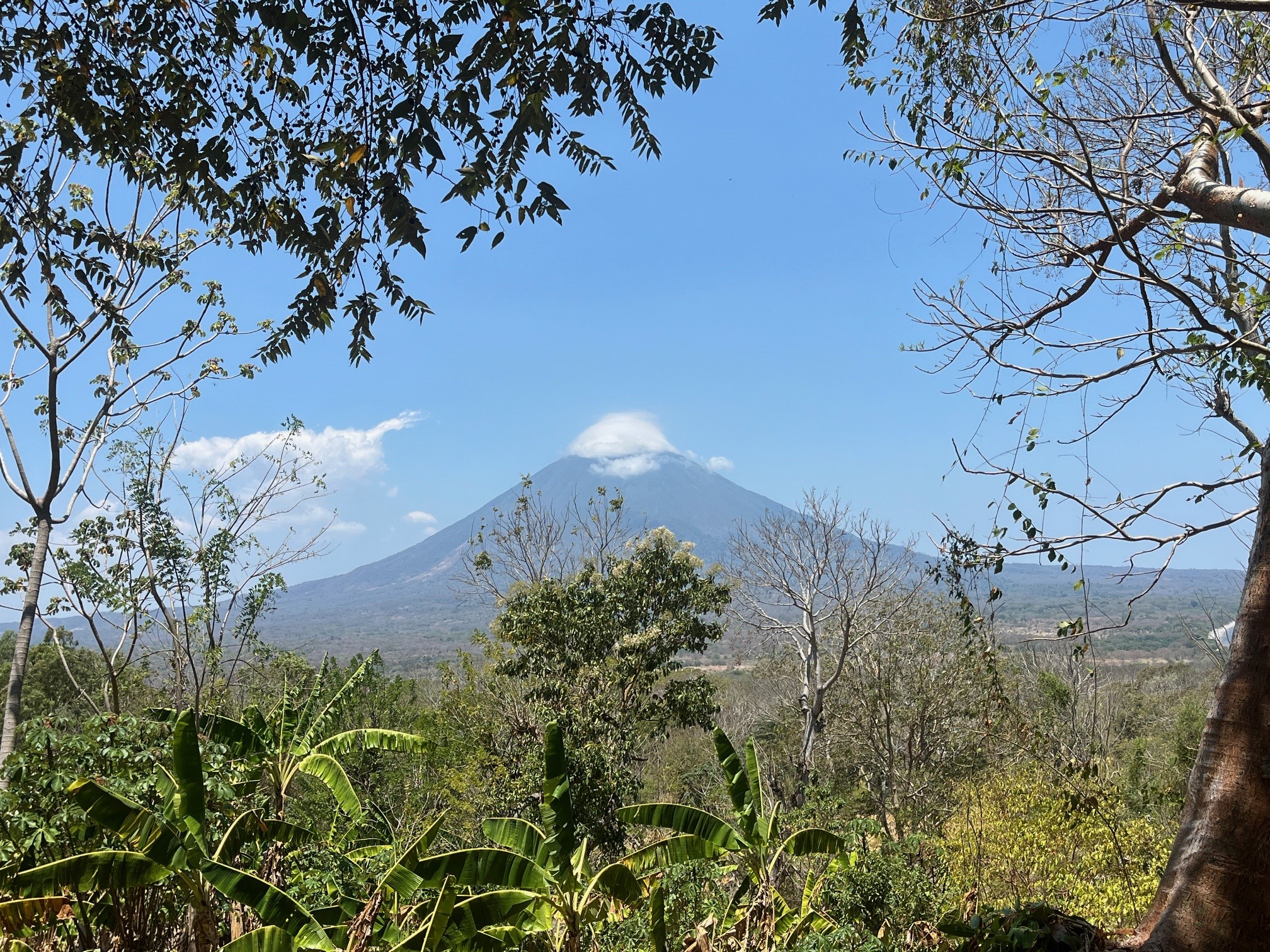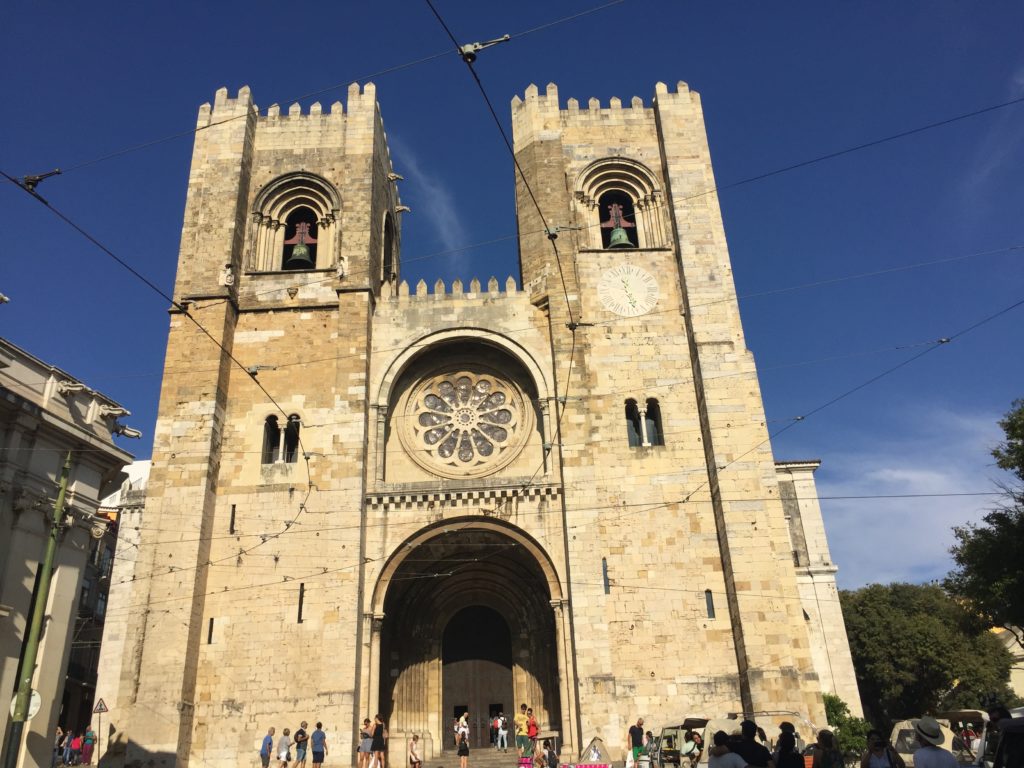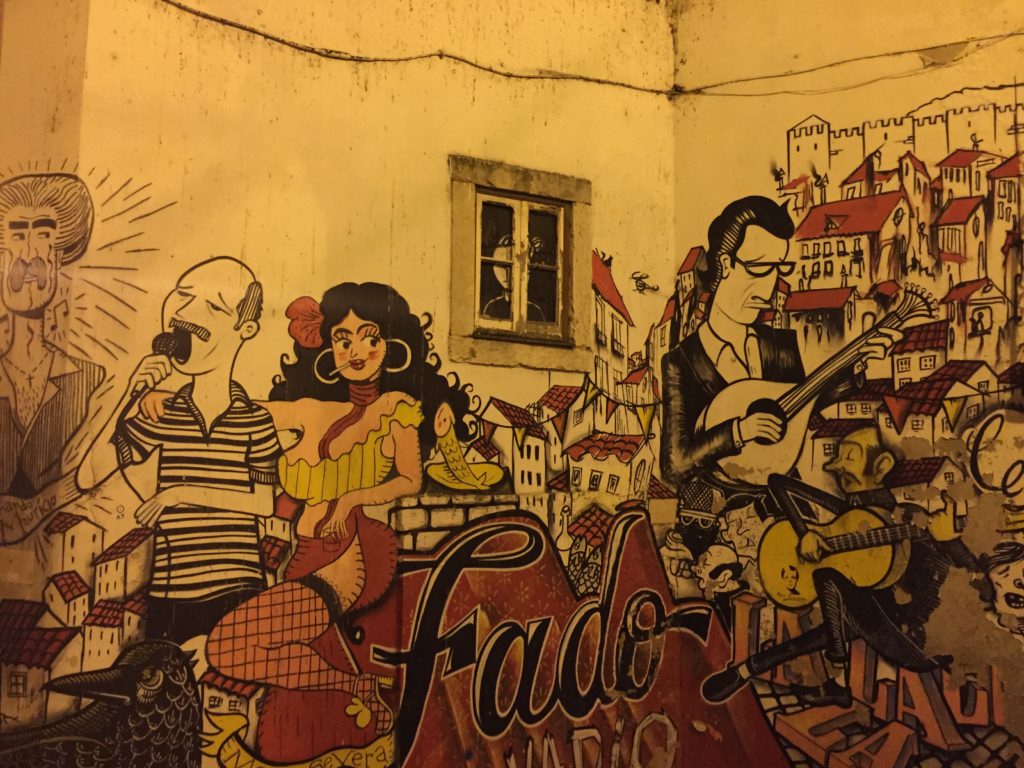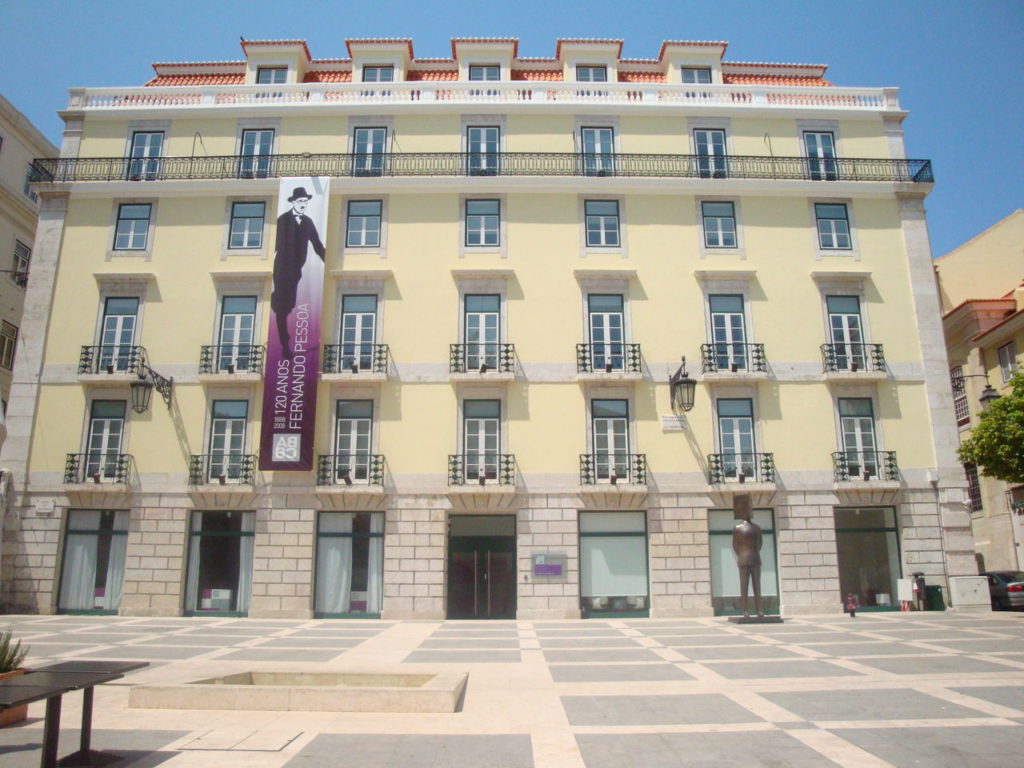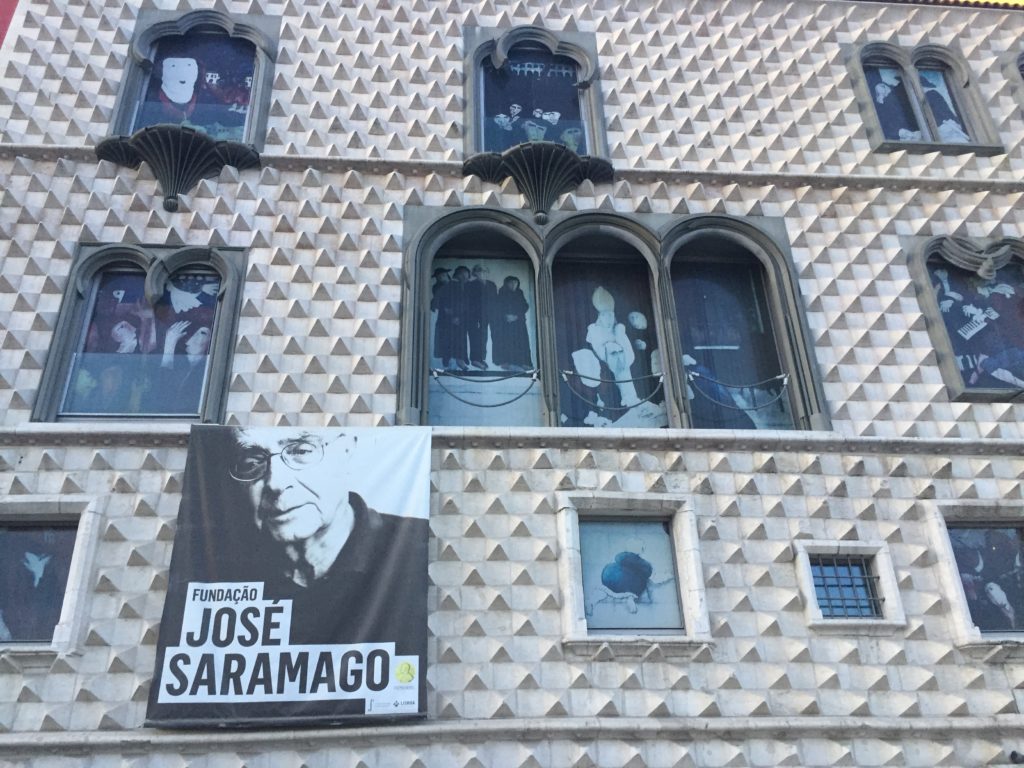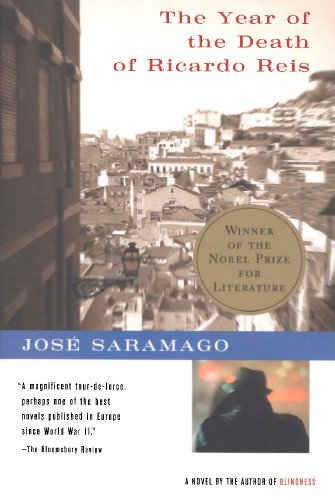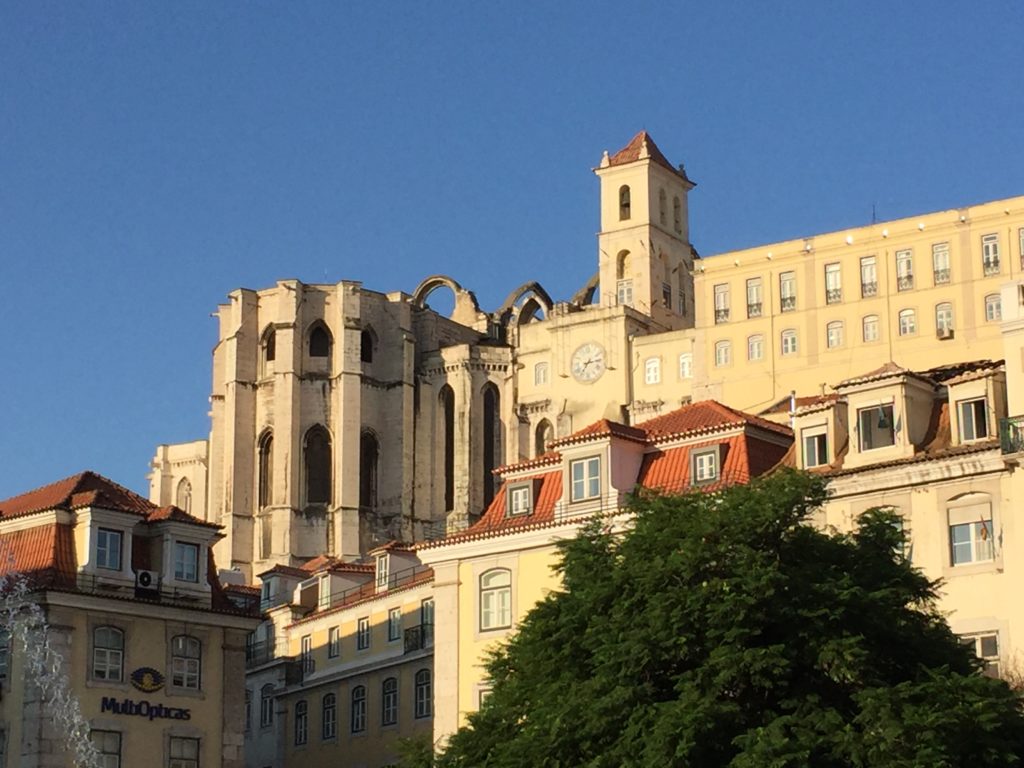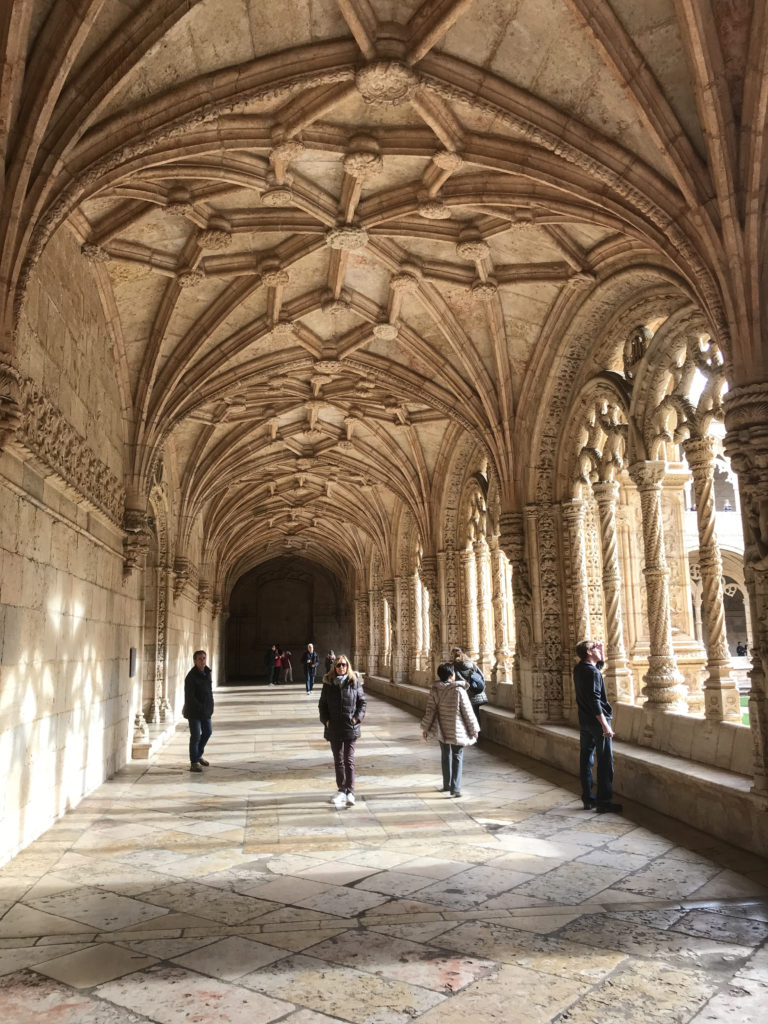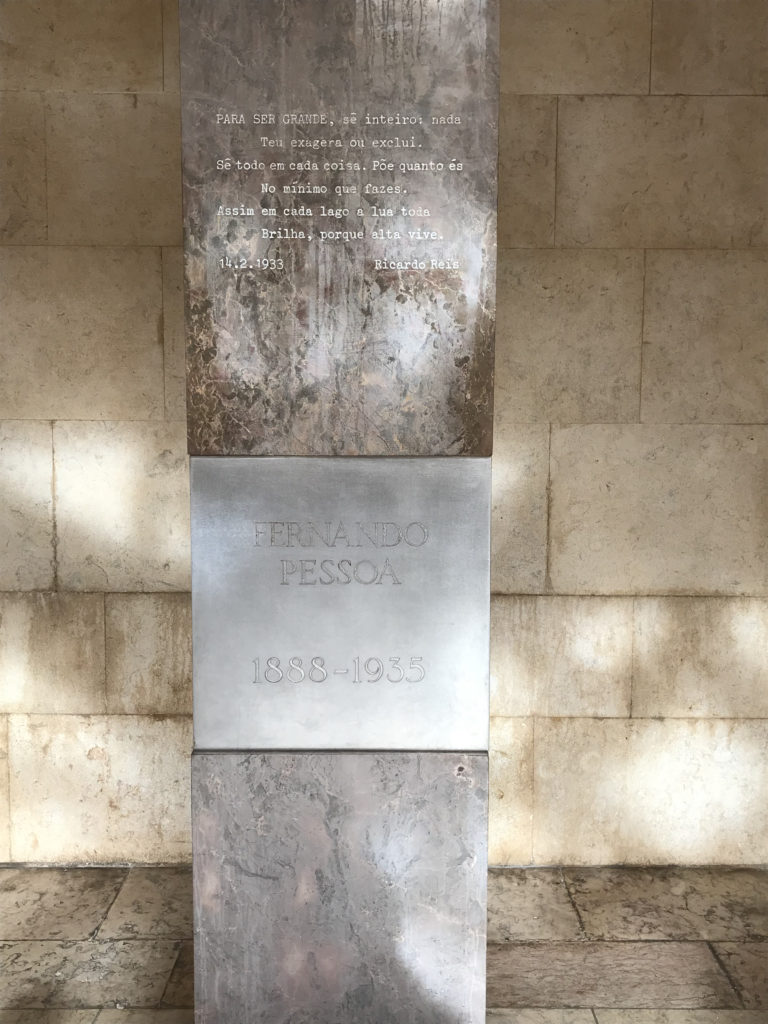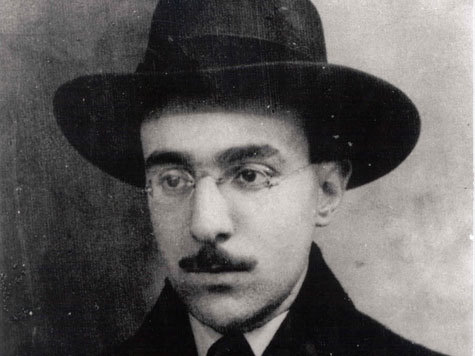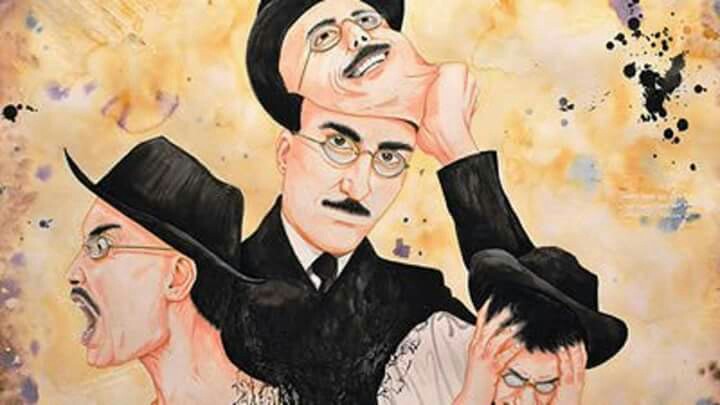Lisbon is a maritime city perched on several hills. You never stop going up or down, like the old yellow tramway which became one of the Portuguese capital’s symbols. It cannot be replaced because modern trams would not be adapted for the hilly itinerary. I took a trip in the streetcar at 7am before the tourists’ rush. But it is the sidewalks that I mainly remember when climbing to arrive on time for the sunset from the Miradouro da Graça or from Sao Pedro de Alcantara. The sidewalks are made of small squares in white stone. They are charming going up but perilous on the way down, especially after the rain.
Going up and down, wandering in a neighborhood when people are waking up, discovering an unexpected viewpoint, sitting on a bench to take in the morning light spreading on the city. I just made two short stays in Lisbon, one at the end of August, the other one in December, and I took advantage of every free time to discover on foot, starting from my hotel in the Baixa neighborhood, a city that I had barely touched during my first visit more than twenty years ago. I thought I had already written a good overview of books about the city on the Tagus, but my morning and evening walks convinced me to dig deeper.
Without premeditation, my steps led me in front of Fernando Pessoa’s house, now a museum, as well as along the building housing the José Saramago foundation. I knew Pessoa’s name as one of the great figures of Portuguese literature. But he was perceived as a “difficult” poet and author and I had not dared reading it for my first article on Lisbon. This time my chance encounters during my wanderings left me no choice.
Once more, however, I decided to approach Pessoa sideways. I had read two novels by Saramago and I loved his style. I therefore started with « The Year of the Death of Ricardo Reis » the novel that the Portuguese Nobel laureate wrote as a tribute to Pessoa. Ricardo Reis is one of Pessoa’s numerous heteronyms. Indeed, the poet whose name in Portuguese means « person » or « nobody » wrote under many names, in addition to his own: Alberto Caeiro, Ricardo Reis, Alvaro de Campos, Bernardo Soares… Those are more than pen names or pseudonyms. Each of these names represents a character with its history, its features and his own literary style.
Saramago’s novel tells the story of Dr. Ricardo Reis who migrated to Brazil but comes back to Lisbon in 1936 after learning of Pessoa’s death. He settles in the Bragança hotel, walks around town, sits down on benches to read the newspaper. At the hotel, he hears the echoes of the Spanish Civil War and observes how Salazar’s regime consolidates its grip on power. He falls in love with Marcenda, a young woman from Coimbra who regularly comes to Lisbon to receive medical care. But it is Lidia, the chamber maid, who occasionally finds her way into his bed. These romances aside, his life is quite dull. Except that, without warning, he gets to meet Pessoa’s ghost and to discuss with him about world affairs. Reis finally decides to leave the hotel and to start again working as a medical doctor. But he also, without any apparent reason, attracts the suspicion of the regime’s political police. Saramago’s book is very well written. I listened to it as an audiobook, partly during my walks up and down Lisbon. It was a perfect introduction to the downtown neighborhoods and Pessoa’s world.
I used « Requiem » by Antonio Tabucchi as my second approach to Pessoa’s work. Tabucchi is an Italian writer who was the director of the Italian Cultural Centre in Lisbon and decided to write this book in Portuguese. The main character was reading « The Book of Disquiet » by Pessoa (or rather by his heteronym Bernardo Soares) in the countryside. Without knowing why or how, like in a hallucination, he finds himself during a hot summer day in Lisbon, wandering in through the streets, waiting for an evening appointment. He goes from neighborhood to neighborhood and meets a lot of unexpected people. Difficult to grasp this novel’s thread, but once again the atmosphere of Lisbon’s streets and alleyways – and of the texts by Pessoa who liked to stroll around the historical city center – is perfectly rendered.
After all these patient approaches, when I went back to Lisbon in December and stopped by chance in front of the monument to Fernando Pessoa in Jeronimos monastery’s cloister in Belem (the church itself contains the tombs of Vasco de Gama and Luis de Camões, the father of Portuguese literature) and when I found « The Book of Disquiet» in the monument’s gift shop, I couldn’t step back anymore. I bought a copy and read it.
« Some people have one great dream in life which they fail to fulfil. Others have no dream at all and fail to fulfil even that [78/422] ».
« Through these deliberately unconnected impressions I am the indifferent narrator of my autobiography without events, of my history without a life. These are my Confessions and if I say nothing in them it’s because I have nothing to say. [25/12] ».
These two segments from « The Book of Disquiet (Livro do Desassossego) » summarize well the spirit of this surprising book, which was posthumously published in 1982, 47 years after Pessoa’s death. It is the work of a writer who is convinced that he would never be published (while alive he published very confidentially in a few reviews), a bookkeeper without ambition, a stay-at-home bachelor who would never leave the streets of downtown Lisbon but who is now celebrated as one the most modern European writers.
